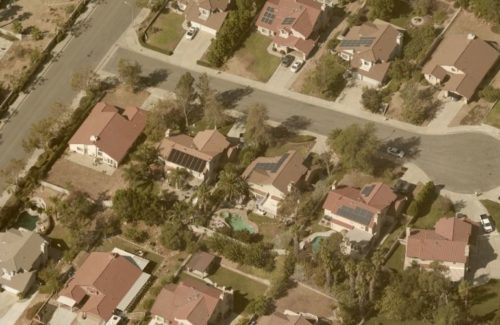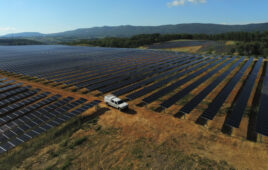 By Pete Cleveland, VP of Solar Business, EagleView. Originally published on eagleview.com.
By Pete Cleveland, VP of Solar Business, EagleView. Originally published on eagleview.com.
Demand for home solar soared in 2020, according to recent Bloomberg New Energy Finance (BloombergNEF) research, with U.S. residential solar installations jumping 21% in the first seven months of this year compared to the same period in 2019. And in its Q4 2020 Solar Market Insight report, Wood Mackenzie and SEIA project the U.S. residential PV market will experience 13% growth in 2021 over 2020, and longer-term growth of 10-15% between 2023-2025.
Much has been said about the potential for roofing contractors to make the leap into diversifying their business through residential PV system installation. However, we’ve yet to see adoption on a wide scale.
The opportunity for contractors to diversify their business is apparent and the contractors that take advantage of this opportunity are sure to scale their businesses and set them apart from their competitors. Why is now the time to get ahead?
1. 75% of roofs in the U.S. are made of asphalt shingles, and the average life of an asphalt shingle roof is 15-20 years.
Depending on how old the roof is when beginning a solar install, it may need to be completely re-done before putting on solar panels. The average life of a residential PV system is 20-30 years, meaning the average asphalt roof would need to be replaced sooner than the system it lies under.
2. In fact, 20% of residential solar system jobs are not completed by the installer because the home needs a new roof at the time of install.
Often, residential solar companies avoid underlying roofing projects because they don’t specialize in that area and have the bandwidth to undertake such a time-consuming process. However, roofers are more than able to handle this aspect of solar installation.
3. One EagleView report supports both roofing and solar, and the transition between the two:
EagleView’s Inform™ products provide data to enable both solar and roofing planning and sales activities, such as azimuth, pitch, and location of roof obstructions, as well as a roofing summary which include suggested waste factor calculations.
One report, two jobs and less time spent on the roof.
4. There are several ways for roofers to enter the solar market, meaning you can start small and work your way up.
In order from easiest/least profitable to the biggest overhaul (and thus most profitable), these are:
- Selling the lead to a partner. You can simply ask the homeowner if they’ve ever considered solar, then sell that lead to a solar installer. As a roofer, you will know the age of the roof either because you installed it, or you can simply tell it is getting old. This makes the lead more valuable than one from another lead source. By selling these simple leads (roof age plus customer contact information), you can generate additional revenue and create tons of new leads.
- Selling a convinced homeowner to a partner. In this instance, the contractor can complete a more thorough qualification process to ensure the homeowner is in a good position to go solar, then sell that qualified lead to a solar installer. Since the homeowner has expressed interest, this qualified lead would include information such as qualification for solar federal tax credit, buying motivation, electric utility name and some amount of usage info, and the age of the roof. Since this step includes weeding out the ‘bad’ leads, it provides a smaller number than step A, but also brings in more revenue per lead.
- Actually selling a PV system and giving it to a third party to install, especially if your company sells more than it can install. This is where your company really starts to make money, and in turn, a close partnership with a solar installer can begin to develop.
- Selling and installing the system yourself. While this requires the most effort for your company, it is almost pure profit. This is how you can create a solar company with small steps, and as you learn more and become more experienced in the industry, you’ll be well on your way to significant revenue streams.
Another benefit of bringing solar leads to solar installers is that, in turn, they will bring roofing leads to you. This doubles the benefit for both companies and can improve the relationship even further.
5. When you go to the site of a potential roofing project, you’re not able to get the age of the roof, so selling and installing yourself is a much more effective solution.
If you’ve done thousands of installs, you know how to determine the age of the roof, which makes the process much simpler. For example, if a contractor knows the roof is 15 years old, they can offer the homeowner a new roof plus a PV system and offer a financing plan that covers both.
As solar installations take off, in addition to storage — which provides another source of leads you can sell to the solar installer — securing this additional stream of revenue will be crucial to growing your customer base and building your bottom line.




You guys are so awesome! All your articles pack a ton of valuable info in a very easy to read format. Great work!